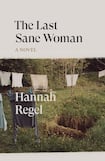
“‘I want to read about women who can’t make things,’” demands Nicola Long, a (slightly entitled) arts graduate, at the opening of Hannah Regel’s debut novel. Making her request at a crumbling, underfunded women’s art archive, Nicola does not refer to the material constraints imposed on women (as in Virginia Woolf’s A Room of One’s Own), but reaches for a more elusive, ineffable form of failure. Regel’s novel tussles with artist’s lives and legacies – and the impermanence of objects left behind.
When offered a dust-laden box of correspondence penned by a fellow potter, Nicola is delighted to find their lives seem to run in tandem. Donna’s letters, written to lifelong friend Susan Baddeley in the 1970s and 1980s, are a catalogue of dead-end jobs and doleful relationships. Tugged into the slipstream of Donna’s narrative, Nicola abandons her nursery day job (where she spends lunchbreaks listless “on the floor of the disabled toilet”) and cuts ties with her boyfriend (who “did not strike her as The Father”). Though Donna has amassed a paper trail, her ceramics are mysteriously absent, and Nicola finds renewed resolve in tracking them down.
From the beginning, Nicola knows Donna’s life ends in tragedy – and it becomes less and less clear whether she is enticed by the supposed parallels between them or if Donna, part of “the sacred troupe of the sublime”, is becoming her muse. (“Her inability to cultivate a convincing aura of tragedy had constituted, for Nicola, one of the great unfairnesses of her life.”) As Nicola attempts to take ownership of Donna’s story, The Last Sane Woman acts as an exacting critique of a feminist “Forgotten Women” revisionist history of art: especially one in which tragedy is fetishised. The interluding third point-of-view of Susan also highlights the chasm between writer and reader, however close the relationship.
Striking metaphors abound in Regel’s prose, wrought with tenderness and a buoyant light touch. Occasionally, this whimsy slips into bizarreness – the “veiny hands of his vocal cords” or an idea driving “a toy car up her back”. Regel, author of two poetry collections, is guilty of a certain tweeness, with her melange of characters incessantly called by their full names. Yet, with this ruminative study of friendship, feminism and the art world, Regel asserts herself as an arresting new voice.










